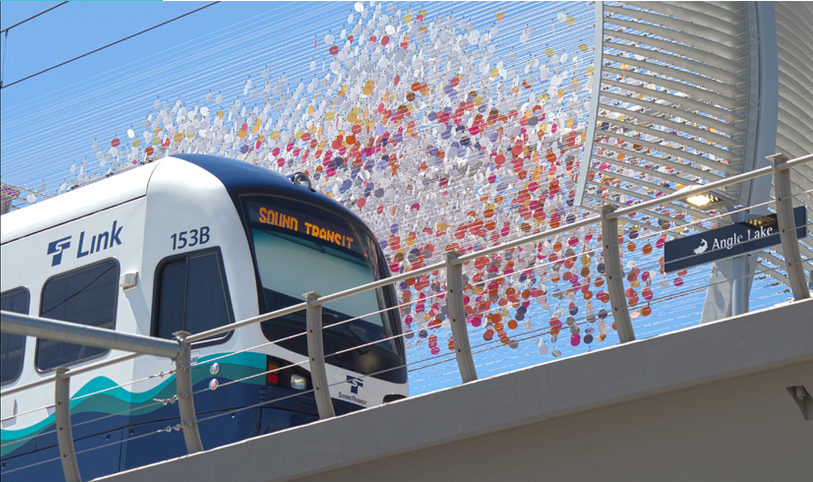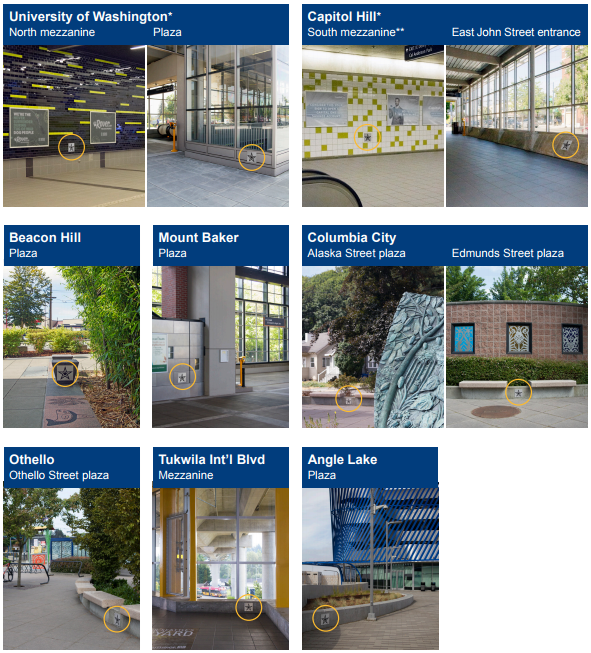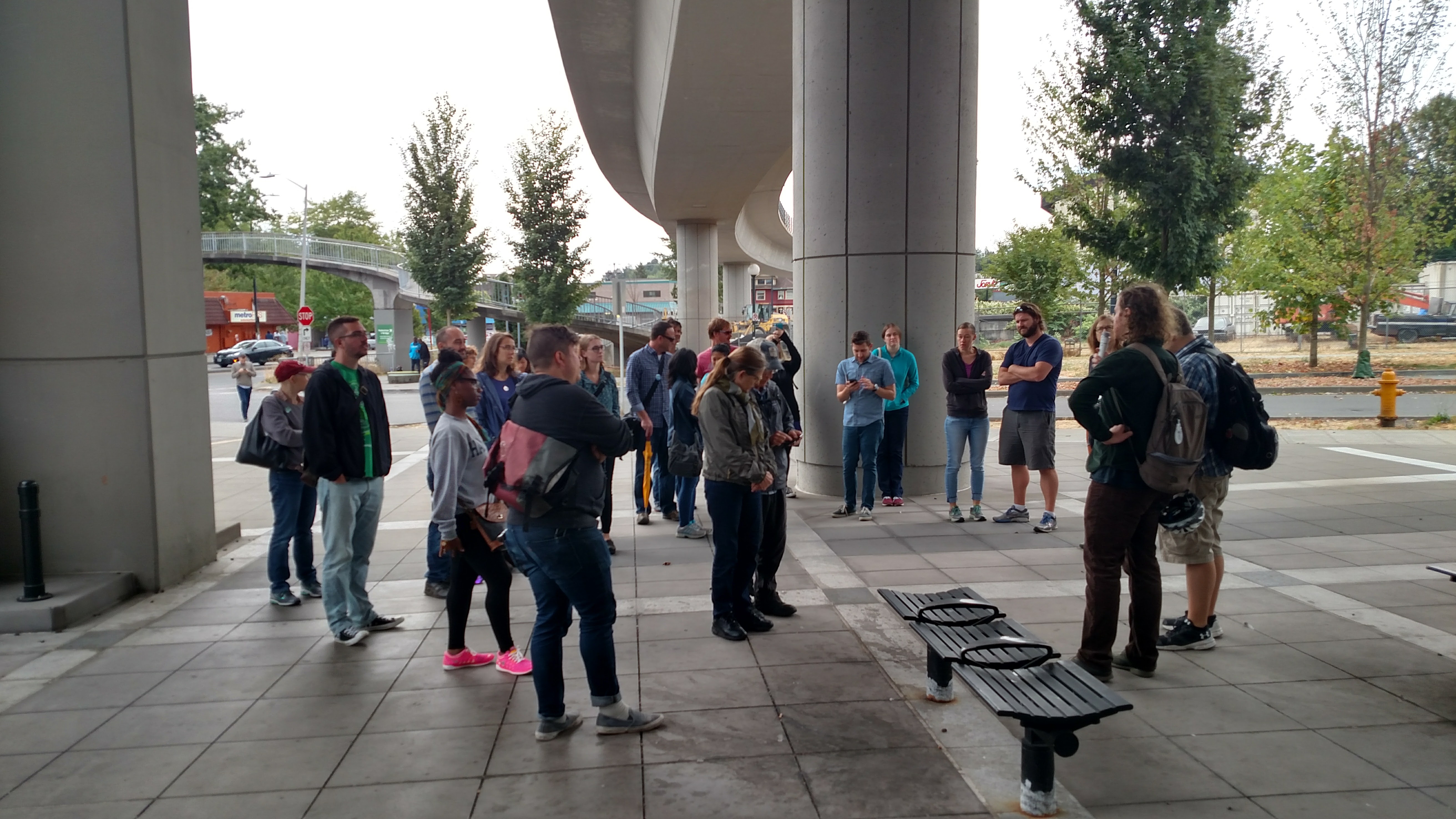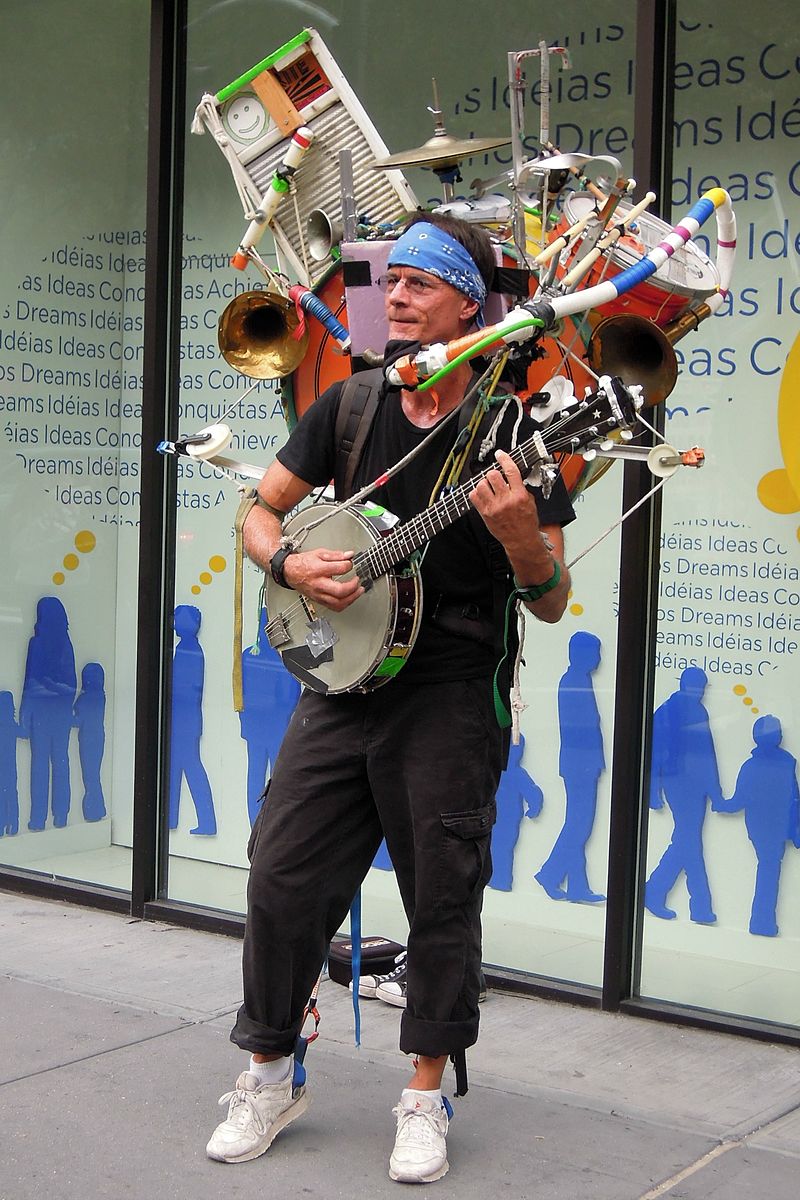
This morning Sound Transit announced it has expanded its street performer program, taking it beyond the pilot program at University of Washington and Capitol Hill Link light rail stations to Beacon Hill, Mount Baker, Columbia City, Othello, Tukwila, and Angle Lake.
“After finishing the pilot project in February, we used feedback from communities and peer agencies to devise a set of guidelines for expanding performance sites to select stations,” said Sound Transit Chief Executive Officer Peter Rogoff. “Our goal is to create a welcoming experience for light rail riders. By providing opportunities for street musicians to perform at more stations, we help support the unique character of those neighborhoods served by Link.”
A survey of transit riders and street performers revealed wide support for expanding the busking program, Sound Transit said.
The busking program should help Sound Transit transform the atmosphere at its stations–which now tend toward drab utilitarianism with little in the way of entertainment or retail–and enliven the spaces within, many of which are beautiful adorned, such as the region’s most recently opened station at Angle Lake, as pictured above.
Sound Transit’s expanded busker program also allow larger performances: “The program now allows as many as five performers at a time, up from a limit of three during the pilot. Performance locations are marked with stainless steel stars to help prevent performers and audiences from blocking station traffic.”

Sound Transit is trying to ensure busking doesn’t get in the way of transit services and that the spectacle doesn’t get too out of hand. “Busking will not be allowed during high-ridership events like Husky Football games and graduation,” Sound Transit states. “Audio amplification and use of risky props such as knives or fire during all performances are prohibited.”
So, sword swallowers, knife jugglers, and firedancers need not apply.

“Sound Transit previously welcomed street musicians outside its light rail facilities, though buskers were not allowed to perform inside stations or on platforms due to congestion concerns,” the release explained. “As the agency looked ahead to opening stations in communities where busking is commonplace, it began researching street performance programs and interviewing representatives from transit agencies such as King County Metro, Metro Vancouver’s TransLink, Calgary Transit, the Bay Area’s BART, and the Metropolitan Transportation Authority in New York. Agency staff worked with the Seattle Music Commission and Seattle Department of Transportation to launch the pilot program in September 2016.”
A full listing of Sound Transit’s busking guidelines are available here. Rules not already referenced are quoted below:
- Busking operates on a first-come, first-served basis.
- Buskers can only perform at approved sites. No busking when either the performer and/or the audience blocks pedestrian and/or vehicular traffic.
- Maximum performance time is two hours per busking site.
- No more than five persons may perform at a site at a time without prior approval.
- Larger groups of six or more must receive approval to perform by emailing largebuskergroup@soundtransit.org. Please include: number in group, performance site preference, dates, and approximate times of performance. It may take at least two weeks to receive approval, and first come first-served rules still apply.
- All performances must be suitable for a general family audience rating; Sound Transit does not allow profanity or obscene language.
- Performers acknowledge they perform at their own risk on Sound Transit property.
Let the music begin.

The featured image of Angle Lake Station is courtesy of Sound Transit.
Doug Trumm is publisher of The Urbanist. An Urbanist writer since 2015, he dreams of pedestrian streets, bus lanes, and a mass-timber building spree to end our housing crisis. He graduated from the Evans School of Public Policy and Governance at the University of Washington in 2019. He lives in Seattle's Fremont neighborhood and loves to explore the city by foot and by bike.


